Before discussing the best and worst sleeping positions, let's first dwell on some general aspects of sleep. The amount we sleep is just as important as how we sleep, and it's amazing that something as ubiquitous as sleep is still a mystery to many people. Too much sleep can be as unhealthy as too little sleep.
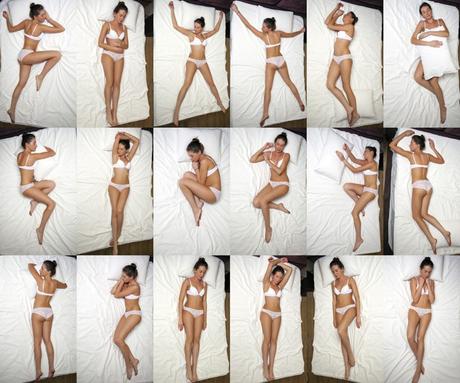
Among the many health conditions affected by sleep are dementia, diabetes, heart disease, obesity, diabetes, and many others. Most people are unaware that less than 5 hours and more than 6 hours of sleep each day can result in increased mortality. Excessive dozing during the day can reduce your life expectancy. However, it's not just how much or how little sleep you get that matters, it's also the position you sleep in.
Sleeping Positions Table of Contents
The Best Sleeping Position and the Worst
So what is the best sleeping position? Who decides what the worst sleeping positions are? Why are there best and worst sleeping positions? Here are some answers to these questions that are based upon science, human anatomy and physiology, and on plain common sense.
It's not only relatively serious medical conditions that can be affected by your sleeping position. Some positions can lead invariably to snoring. Others can cause heartburn or even exacerbate wrinkling of your skin. Also, let's not forget the amount of rest that sleep provides for your body and your brain. Your brain needs a rest at night just as your muscles do.
Here are some pros and cons of each of the three main sleeping positions.
* Figures are approximations taken from multiple sources.
Pregnancy
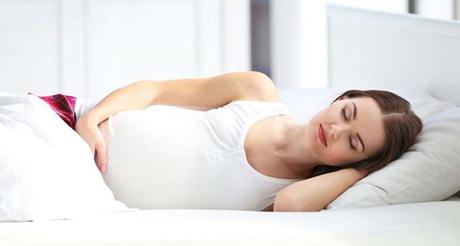
The recommended sleeping position for pregnant women is on their left side. That is because your liver is situated in the right hand side of your abdomen. By sleeping on your left side, you will prevent the uterus from pressing down onto your liver. You will also maximize the circulation of blood to your growing fetus.
In fact, it is generally best for side sleepers to sleep on their left side whether they are pregnant or not. This position interferes less than any other with the circulation of blood and also helps prevent your major organs from pressing against each other.
Orthopedic Factors
Think about the shape of your spine. Many people believe that it runs in a straight line from the top of your neck to the lowest of the bones in your spine: the coccyx. Not true! Well, it's partially true, but not completely. If you have an X-ray taken from the front of your body to the back (or back to front) your spine will appear to be straight from top to bottom.
However, take that X-ray from either side, and your spine will take the shape of an elongated 'S' curve. This curve has to be supported while you sleep and when you are lying flat out on your bed. If not supported, then the way you lie will tend to flatten the curve out at the neck (cervical region) and lower back (lumbar region).
What that means is that it is not only how you lie (your sleeping position) that matters. The way that your mattress supports the curvature of your spine is also very important. Memory foams do this better than harder innerspring mattresses. Dunlop latex provides more cushioning than latex manufactured using the alternative bouncier Talalay process.
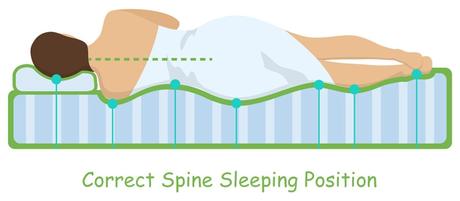
Now let's consider all the above facts together, and discuss the relative benefits of the three major ways how people sleep. We shall begin with back sleepers:
Back Sleeping: Benefits
Most people find their best sleeping position long before they rationalize it in terms of benefits. Fundamentally, back sleepers lie flat out on their backs, so support for the spine is essential. Without good support, the lower back, or lumbar region of your spine, can be forced down and lose its natural curve. The same is true of your neck. Without proper support, the natural curve of your neck (cervical vertebrae) will be put under pressure. This usually results in neck pain.
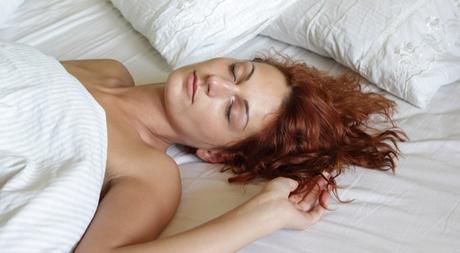
Back sleeping is one of the two best sleeping positions for most people. The likely reason for this is that the position provides good support for the spine. This particularly became the case with the introduction of memory foams and other forms of reactive foam that provide excellent support for the various curvatures of the spine. The natural shape of your spine can now be properly supported: both at the neck and at the curvature of the lower spinal region.
Not only that, but this can all be achieved with your face open to the air. You can avoid wrinkling, and many people find the combination of mechanical support and the cosmetic benefits of the new foams to be an irresistible combination of benefits.
Back Sleeping: Disadvantages
Snoring: Sleeping on your back is not all positive of course - few things ever are. The negatives of this way of lying on your mattress include snoring and sleep apnea. When you lie on your back, the back of your tongue will drop back into your airway. This can cause a partial obstruction which leads to snoring - often severe!
Sleep Apnea: Sleep apnea is a condition where the subject stops breathing multiple times during the night - sometimes as many as hundreds of times. If this goes untreated, it increases the risk of death by four times. It hardly seems possible that people continue to sleep on their backs knowing that they have this problem.
Side Sleeping: Benefits

Side sleeping is the best sleeping position for the majority of people. The question is, which side is best: the right or the left? All indications are that side sleepers are best to sleep on their left side. The vast majority of the benefits of side sleeping come from sleeping on the left. Among these benefits are:
Digestion Problems: Heartburn and acid reflux are alleviated and digestion is given a boost when you sleep on your left side.
Essential Processes: The essential processes of blood circulation, waste disposal from the brain and detoxification of the lymph nodes are all related to the right hand side of your body. By sleeping on the left, you will avoid interfering with such metabolic processes and so help to avoid any issues with them.
Side Sleeping: Disadvantages
The main issue with sleeping on your left hand side is that you put pressure on your lungs and your stomach. Many also become too aware of their heart beating, and prefer to switch to the right side. There is also the dead arm situation: side sleepers often wake up lying on an arm which has gone numb. Apart from these issues, the next most common issue or side sleepers is related to shoulder pain. This way of sleeping can put stress on the shoulders (one or the other), and for many, it is not a genuine option.
Stomach Sleeping: Benefits
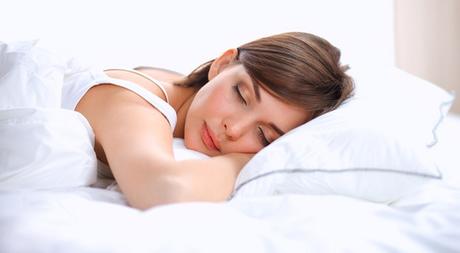
There are few benefits to sleeping on your stomach. This is not one of the best sleeping positions, and the fact that the only genuine benefit is preventing snoring does little to make it more popular.
Stomach Sleeping: Disadvantages
Sleeping on your stomach tends to flatten the natural curvature of your spine. This can lead to lower back pain (lumbar pain). If you must use this position, use a spare pillow beneath your lower abdomen and hips to provide some reasonable support. As we suggested earlier, if you suffer from sleep apnea, then stomach sleeping might be one of the best sleeping positions for you.
The Best and Worst Sleeping Positions - Conclusion
It can be truthfully stated that there are best sleeping positions and worse alternatives. Most people sleep in the position they find most comfortable. There are no sleeping positions that you 'must' or 'must not' use. The fact is that most people use more than one way of sleeping during any particular night.
A lot of work has been carried out on the best sleeping positions. It can generally be stated that the side and back are the favorite positions and that there is no one single position that everybody should adopt. Modern mattress technology has helped to make the whole sleeping procedure more comfortable, but unfortunately, a universal solution has yet to be developed - and is highly unlikely to be just around the corner.

